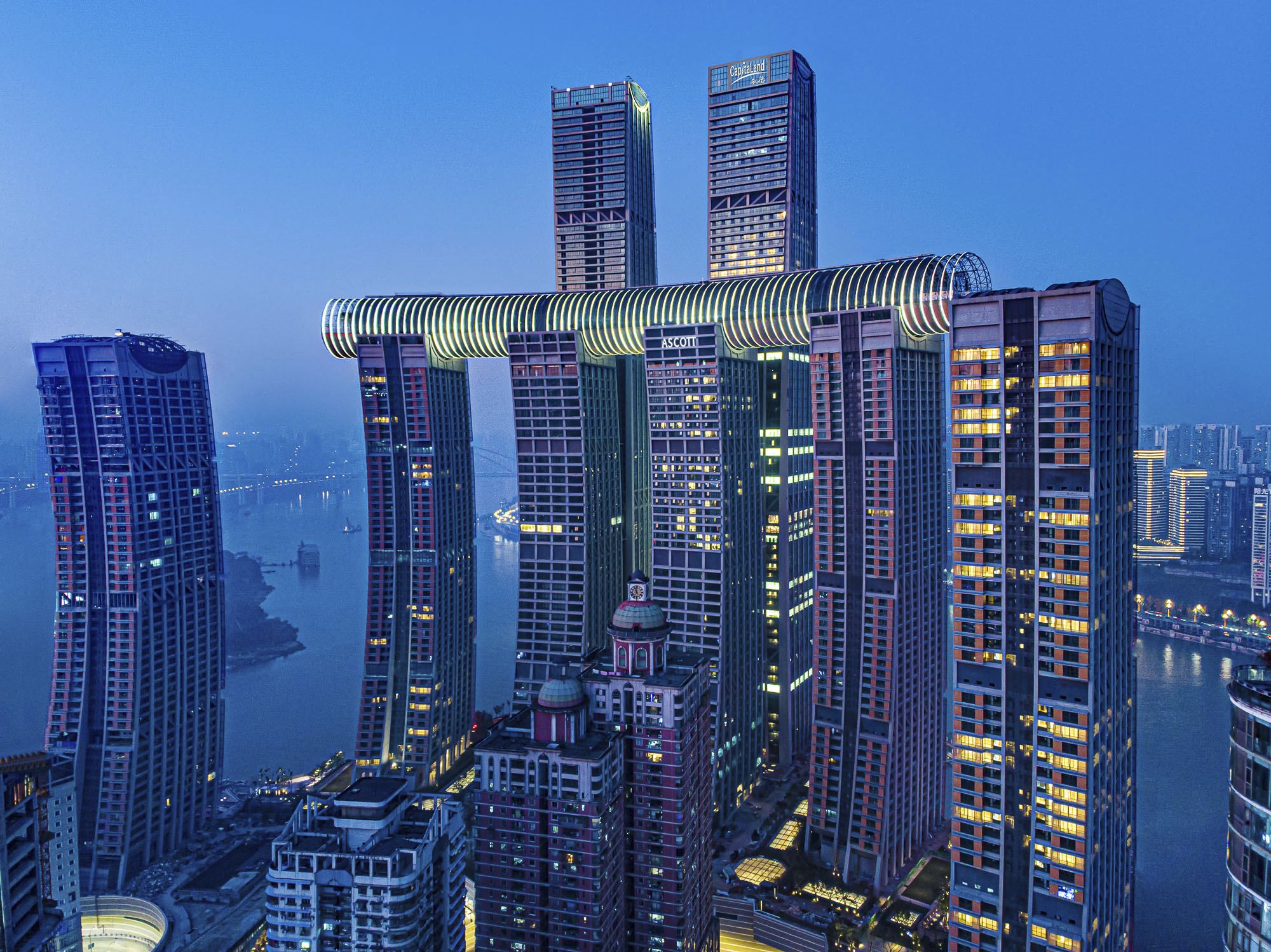As the largest city in western China, Chongqing is in the spotlight for its unusual mountainous terrain, rich culture, and extravagant flavors. "Chongqing: A Culinary And Cultural Exploration Of China's Mountain City" is an engaging travel guidebook to discover all that and more!
Editor's Notes: Chongqing: A Culinary And Cultural Exploration Of China's Mountain City has been published on 6th September 2023 and has been in the limelight ever since. As one of the leading travel resources, we understand the importance of having all the details before you embark on your trip.
Through a combination of both culinary and cultural lenses, our travel experts at [Travel Resource Name] have analyzed, dug information, and put together this Chongqing: A Culinary And Cultural Exploration Of China's Mountain City guide to help you make an informed decision.
FAQ
The following are frequently asked questions about Chongqing, its culinary delights, and cultural heritage.
Question 1: Why is Chongqing known as "China's Mountain City"?
Chongqing is situated amidst the rolling hills and mountains of southwestern China. Its unique topography has greatly influenced its culture, cuisine, and overall development.
/suspension-bridge-over-river-in-modern-city-827441810-5c6d8016c9e77c0001efa086.jpg)
10 fapte geografice despre cel mai mare municipiu din China - Source www.greelane.com
Question 2: Is Chongqing's cuisine particularly spicy?
Chongqing is renowned for its spicy and flavorful dishes. The use of chili peppers, Sichuan peppercorns, and other spices gives Chongqing's food its distinctive numbing and fiery taste.
Question 3: What are the must-try dishes in Chongqing?
Some of the most popular dishes include Chongqing: A Culinary And Cultural Exploration Of China's Mountain City spicy hotpot, Chongqing noodles, and grilled fish with chili sauce.
Question 4: Besides its food, what cultural attractions are there in Chongqing?
Chongqing has a rich cultural heritage. Visitors can explore historical sites, such as the Dazu Rock Carvings and the Three Gorges Museum, as well as participate in traditional festivals and cultural performances.
Question 5: How accessible is Chongqing for tourists?
Chongqing is a major transportation hub in China, with an international airport and high-speed rail connections to other cities. Getting around within the city is also convenient, with a comprehensive public transportation system.
Question 6: Is there a particular time of year that is best to visit Chongqing?
Chongqing's weather can be humid and hot in the summer, and cold and damp in the winter. The best time to visit is during the shoulder seasons (spring and autumn) when the climate is more temperate.
In conclusion, Chongqing is a fascinating city that offers a unique blend of spicy cuisine, rich cultural heritage, and stunning natural scenery. Whether you are a culinary enthusiast or a culture aficionado, Chongqing is sure to leave a lasting impression.
For further insights into the culinary and cultural treasures of Chongqing, please refer to the article "Chongqing: A Culinary And Cultural Exploration Of China's Mountain City".
Tips
Exploring the culinary and cultural landscape of Chongqing can be an exhilarating experience. However, to fully immerse yourself in this vibrant city, it is crucial to keep the following tips in mind.
Tip 1: Embrace the麻辣(má là) Flavors: Chongqing cuisine is renowned for its distinct麻辣(má là) or "numbing and spicy" flavors. Be prepared to encounter an explosion of spices, including chili peppers and peppercorns, that will awaken your taste buds. Embrace these bold flavors and don't shy away from the heat.
Tip 2: Explore Hidden Food Gems: While Chongqing is home to many renowned restaurants, some of its best culinary experiences lie hidden in the alleys and backstreets. Venture off the beaten path and seek out small, unassuming eateries that offer authentic local flavors. These hidden gems often serve up mouthwatering dishes at affordable prices.
Tip 3: Immerse Yourself in Local Markets: To truly delve into Chongqing's culinary culture, visit its bustling local markets. These vibrant marketplaces showcase the city's diverse ingredients and offer a glimpse into the daily lives of its residents. From fresh produce to exotic spices, the markets provide a sensory feast.
Tip 4: Respect Local Customs: When dining in Chongqing, show respect for local customs and etiquette. Use chopsticks correctly, share dishes with others, and avoid talking loudly. These courtesies will not only enhance your dining experience but also demonstrate your appreciation for the city's culture.
Tip 5: Learn Basic Mandarin Phrases: While English is spoken in some tourist areas, learning a few basic Mandarin phrases can go a long way. From ordering food to asking for directions, simple phrases will help you navigate the city and connect with locals.
By following these tips, you can fully embrace the culinary and cultural delights of Chongqing and create lasting memories of this vibrant and unforgettable city.
Chongqing: A Culinary And Cultural Exploration Of China's Mountain City
Chongqing, a metropolis carved into China's mountainous heart, is a city of compelling contrasts, where towering skyscrapers cast long shadows over ancient temples and the spicy aroma of street food mingles with the fragrance of blooming magnolia trees. This culinary and cultural exploration delves into the essential aspects that define the unique identity of China's "Mountain City".
- Fiery Cuisine: Chongqing's cuisine is renowned for its fiery flavors, a result of the liberal use of chili peppers and Sichuan peppercorns, creating dishes that ignite味蕾 (taste buds).
- Mountainous Landscape: Perched on the confluence of the Yangtze and Jialing rivers, Chongqing's geography has shaped its urban landscape, characterized by steep hills and narrow streets.
- Ancient Heritage: Despite its modern facade, Chongqing boasts a rich history, with ancient temples and historical sites like the Dazu Rock Carvings, a UNESCO World Heritage Site.
- Nightlife Capital: Chongqing transforms into a vibrant nightlife hub after dusk, with bustling night markets, lively bars, and karaoke venues.
- Cultural Melting Pot: Chongqing has been a crossroads of different cultures throughout history, resulting in a diverse population and a blend of architectural styles.
- Transportation Hub: As a major transportation hub, Chongqing is easily accessible by air, rail, and water, making it a convenient starting point for exploring the region.
These six key aspects provide a glimpse into the multifaceted nature of Chongqing, a city where the fiery flavors of its cuisine blend harmoniously with the tranquility of its ancient temples, and the bustling energy of its nightlife contrasts with the serene beauty of its mountainous surroundings. Chongqing is a city that offers a truly immersive experience, inviting travelers to embark on a culinary and cultural adventure that will leave a lasting impression.

Raffles City Chongqing | Safdie Architects - Arch2O.com - Source www.arch2o.com

Chongqing FAQs: A Quick Guide to China’s Mountain City! - Source travelzorg.com
Chongqing: A Culinary And Cultural Exploration Of China's Mountain City
The connection between "Chongqing: A Culinary And Cultural Exploration Of China's Mountain City" lies in its ability to provide an immersive exploration of the city's unique culinary and cultural heritage. Through its in-depth examination of Chongqing's cuisine, history, and traditions, the book offers a comprehensive understanding of the city's identity and its place within China's culinary and cultural landscape.

AirAsia X commemorates service resumption to Chongqing – China’s - Source news.marketersmedia.com
The book's detailed descriptions of Chongqing's iconic dishes, such as "huo guo" (hot pot) and "xiao mian" (noodles), not only tantalize the reader's taste buds but also shed light on the city's culinary history and cultural influences. It explores the origins, ingredients, and preparation methods of these dishes, highlighting their connection to Chongqing's geographic location, climate, and local traditions.
Beyond its culinary focus, the book also delves into Chongqing's rich cultural heritage, examining its ancient temples, historical sites, and vibrant street life. It provides a comprehensive overview of the city's unique character, traditions, and the everyday lives of its people. This multifaceted approach allows the reader to gain a deeper understanding of Chongqing's cultural fabric and its connection to its culinary traditions.
Overall, "Chongqing: A Culinary And Cultural Exploration Of China's Mountain City" serves as an invaluable resource for anyone seeking to explore the culinary and cultural treasures of this fascinating city. Its comprehensive and engaging approach makes it an essential read for food enthusiasts, cultural explorers, and anyone interested in the rich tapestry of Chinese culinary traditions.
Conclusion
In exploring "Chongqing: A Culinary And Cultural Exploration Of China's Mountain City," readers gain a comprehensive understanding of the city's unique identity and its place within the broader context of Chinese culinary and cultural traditions. The book's in-depth examination of Chongqing's cuisine, history, and culture provides a valuable resource for anyone seeking to explore this fascinating city.
Beyond its immediate value as a culinary and cultural guide, the book also serves as a reminder of the importance of preserving and celebrating cultural heritage. By showcasing the rich culinary traditions and vibrant cultural life of Chongqing, it highlights the need to document and pass on these traditions to future generations.